Click the blue text


Follow us
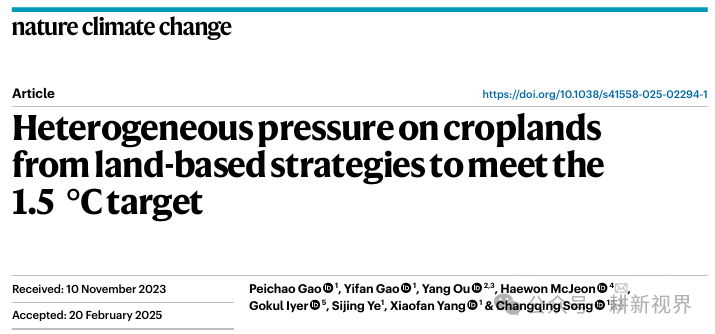

Article Information
Title Translation:Land Strategy for Achieving the 1.5°C Target and Its Heterogeneous Pressure on Farmland
Published Journal:Nature Climate Change
Online Date:2025.03.24
First Author:Gao Peichao, Associate Professor
Corresponding Authors:Haewon McJeon;Song Changqing, Professor
Corresponding Institutions:Korea Advanced Institute of Science and Technology;Beijing Normal University
Online:Using a high-resolution global land system model, this study assesses the impact of land strategies implemented to achieve the 1.5°C target of the Paris Agreement on global farmland area and regional food security, finding that global farmland area is expected to decrease by 12.8%, with South America experiencing the most significant reduction (23.7%), and southern countries facing greater food security challenges.

Research Background
The Paris Agreement aims to limit global temperature rise, requiring countries to achieve this goal through regular reviews and strengthening of climate commitments. Current research primarily focuses on energy and emission pathways, but the specific impacts on agriculture, land systems, and sustainability remain uncertain. Researchers assessed the specific impacts of achieving the 1.5°C target on the global land system by analyzing the latest climate commitments from various countries, focusing on the effects of land use intensity and land use change on farmland area. The article emphasizes that many climate commitments rely on land-based carbon sequestration strategies, such as afforestation, reforestation, and restoration of degraded ecosystems, which may lead to a reduction in farmland area.
Main Results
Global Farmland Area Changes: The study found that under the 1.5°C scenario, global farmland area is expected to decrease by 12.8%, while under the baseline scenario, farmland area would increase by 4.14%. South America is expected to see the most significant reduction in farmland area, with a projected decrease of 23.7%, and southern countries are expected to account for 81% of the global farmland loss.
Regional Differences: Farmland area in the global north is expected to decrease by 12.2%, while in the global south, it is expected to decrease by 13.0%. At the continental scale, South America and Europe are expected to experience the most severe farmland losses, with reductions of 23.7% and 14.9%, respectively. Farmland area in Asia and Africa is expected to decrease by 12.8% and 11.2%, respectively.
National Scale Farmland Loss: Among the 100 countries or regions with the largest farmland area in 2015, 72 are expected to experience farmland loss by 2100. Among them, Vietnam, South Sudan, and Zambia are projected to experience the most severe farmland losses, with an average loss of 46.9%.
Food Security Challenges: Southern countries not only face farmland loss but also rely on food imports. The study found that the global north is a net exporter of food, while the global south is a net importer. Under the 1.5°C scenario, the food export potential of the global north is expected to decrease by 12.6%, which will lead to a reduction in food imports for the global south, further exacerbating food security issues.

Article Figures
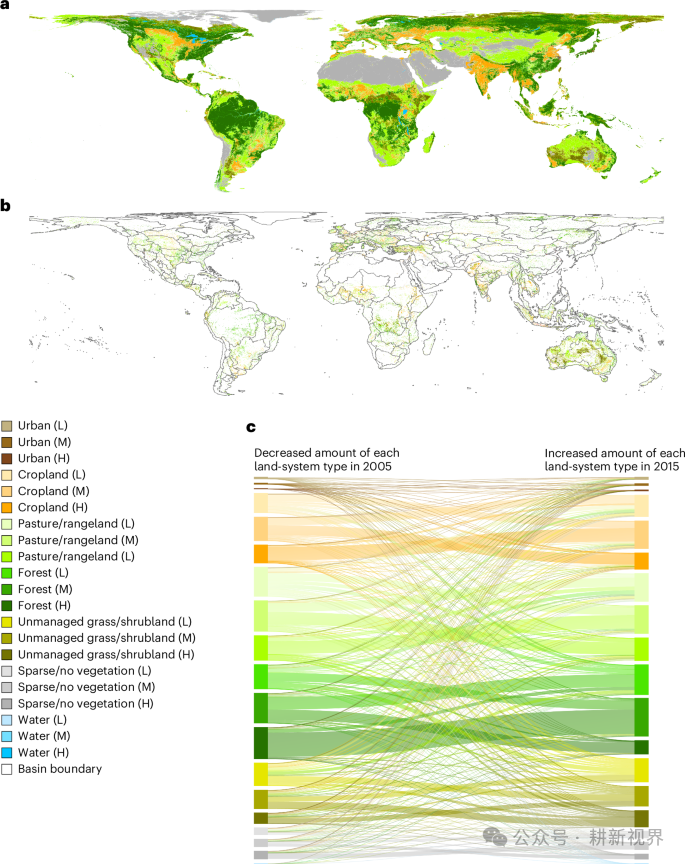
Figure 1: Global Land System Map in 2015 and Changes in Land System Types from 2005 to 2015
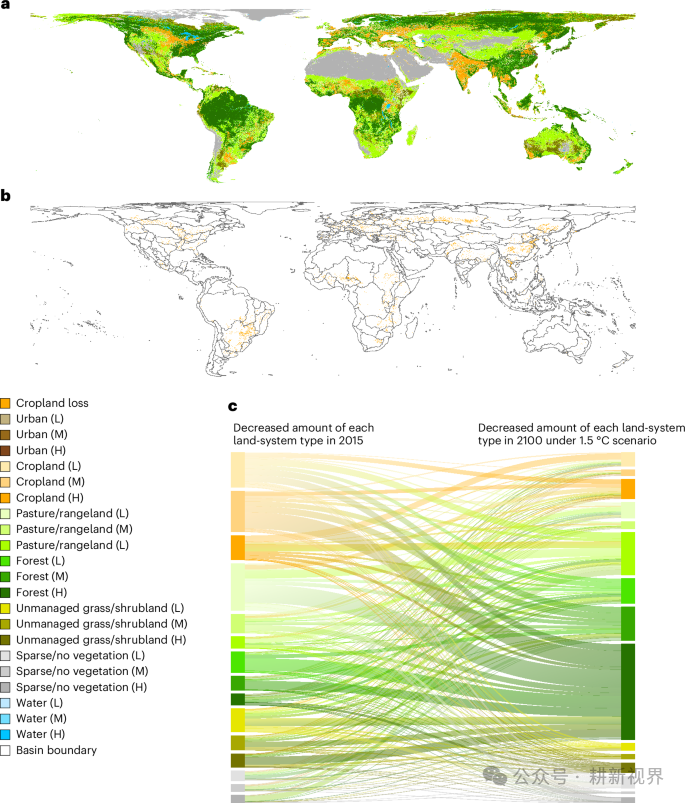
Figure 2: Global Land System Map in 2100 and Changes in Land System Types from 2015 to 2100 (1.5°C Scenario)
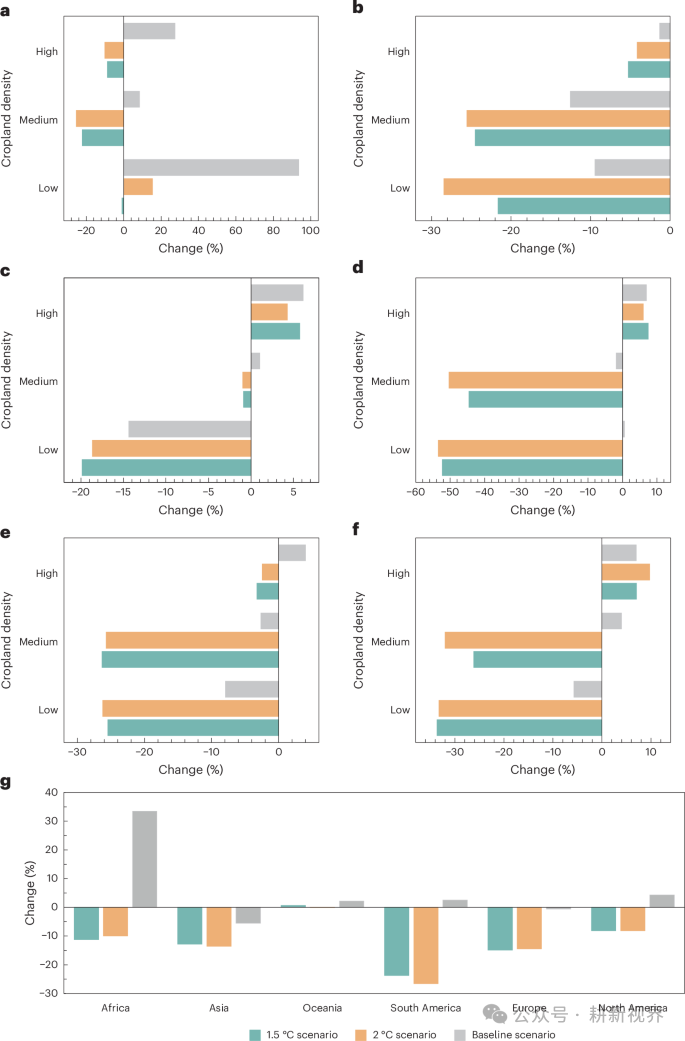
Figure 3: Changes in Farmland at the Continental Scale in 2100 Compared to the 2015 Reference Year under the 1.5°C Scenario
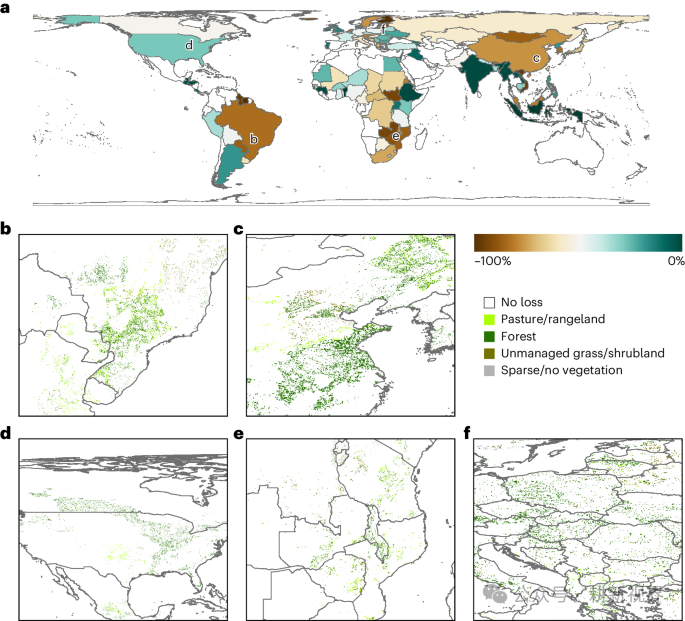
Figure 4: National Scale Farmland Loss in 2100 Compared to the 2015 Reference Year under the 1.5°C Scenario
===============Welcome to follow! Welcome to communicate!AgriVision===============